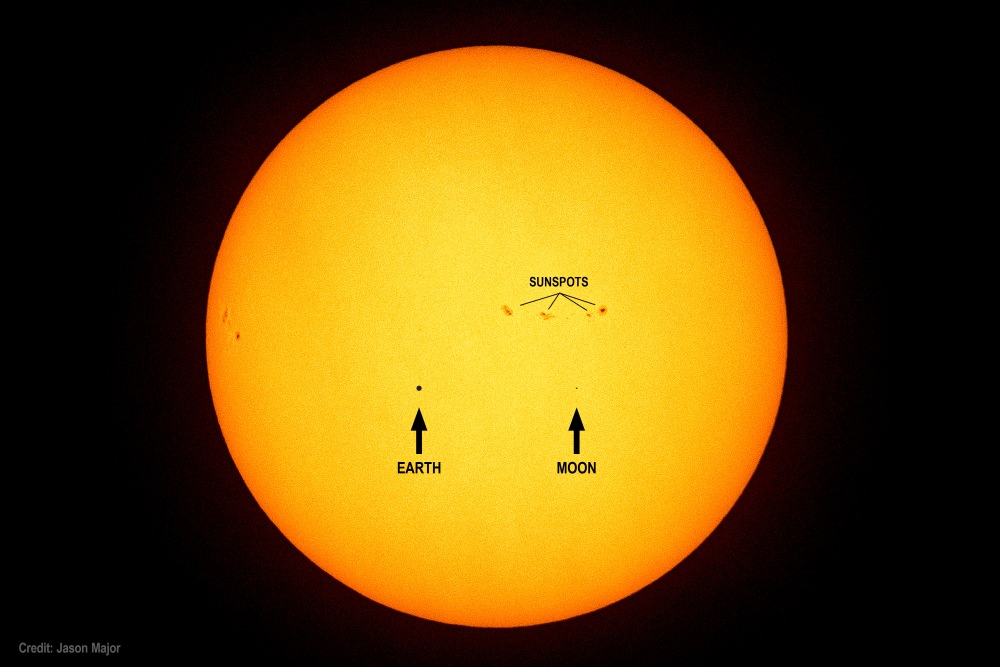It really is. I mean, nevermind that it contains 99% of all the mass in the Solar System, that it supplies our planet with the energy needed to sustain life, that its constantly-blowing solar wind helps keep some of those nasty cosmic particles out of the planetary neighborhood, and that it makes a bright sunshiny day even possible (but remember to wear sunscreen!) In addition to all that, it’s also just really, really cool. In the hot sense, of course.
Watch the video above from NASA’s Solar Dynamics Observatory (SDO) and you’ll see what I mean.
Back on July 19, 2012, during the height of the last solar maximum, SDO captured a looping prominence on the Sun that could dwarf our planet. It rose up from the Sun’s eastern limb after a flare and resulting coronal mass ejection, or CME, forming an arc of solar plasma that grew bright in extreme ultraviolet light but then began to “rain” back down to the surface, a phenomenon known as coronal rain.
It’s not fire, it’s not lava, it’s not even a liquid, yet on those scales and with that sort of magnetic energy controlling it the behavior of the solar material is truly mesmerizing to watch.
For an idea of timing, each second in the video above corresponds to 6 minutes of real time.
Also, contrary to popular belief the Sun is not a ball of fire. Fire is a chemical process of rapid oxidation—there’s no oxidation occurring on or in the Sun. There’s nothing “on fire” (unlike a burning log in a campfire.) All those loops and tongues of “flame” and dancing flickers you see are the result of magnetic activity, arcs of magnetic fields that rise up through the Sun’s “surface” and carry superheated, glowing plasma along with them, making the magnetic fields visible to SDO’s instruments.

Compared to Earth the Sun is enormous — 880,000 miles / 1.41 million kilometers in diameter, it’s a sphere big enough to contain over a million Earths — and its magnetic fields are powerful and complex. They rise and fall like ocean waves across its surface, but also can create graceful arcs and twisting tornadoes that extend tens of thousands, sometimes hundreds of thousands of miles out into space.
What’s even more amazing to think about is that this isn’t just our Sun that’s acting this way — this is a star we’re looking at here, and as such this is how stars behave. The points of light in the night sky, they all do this too… just very far away. We just happen to have the tools to be able to watch our Sun in ways we never could before and learn how it — and all stars like it — work, from a very convenient distance of 93 million miles away.
And if that’s not awesome, I don’t know what is.
See more images of our nearest star on the SDO website here, and see images I’ve processed from SDO from the last solar maximum here.
Video credit: NASA/SDO

The sun is beautiful. I understand all of the sci-fi stories–Sunshine for example–where people hurt themselves by staring at it too long.
LikeLike
Yes our Sun is really awesome.
Great video and thanks for sharing it 😉
Jeff Barani from Vence (France)
LikeLike
In space you don’t see any stars in the visible light spectrum. You will see the planets, the moon, maybe asteroids, stuff that reflects the light from our sun. That is why you do not see stars in photos taken from the moon, or from the early space missions. No atmosphere means nothing for the visible light from the stars to reflect on.
LikeLike
That’s entirely not true. Astronauts see a sky filled with stars – the reason they don’t show up in many photos is because they are too dim compared to an illuminated planet or moon to be captured on film, not without overexposing the planet. Nighttime pictures of Earth from orbit do in fact capture many stars.
Our eyes have the ability to see bright objects and dim objects at the same time. Cameras cannot do this – they have to be set for one or the other.
LikeLike
Space looks empty with the naked eye.
LikeLike